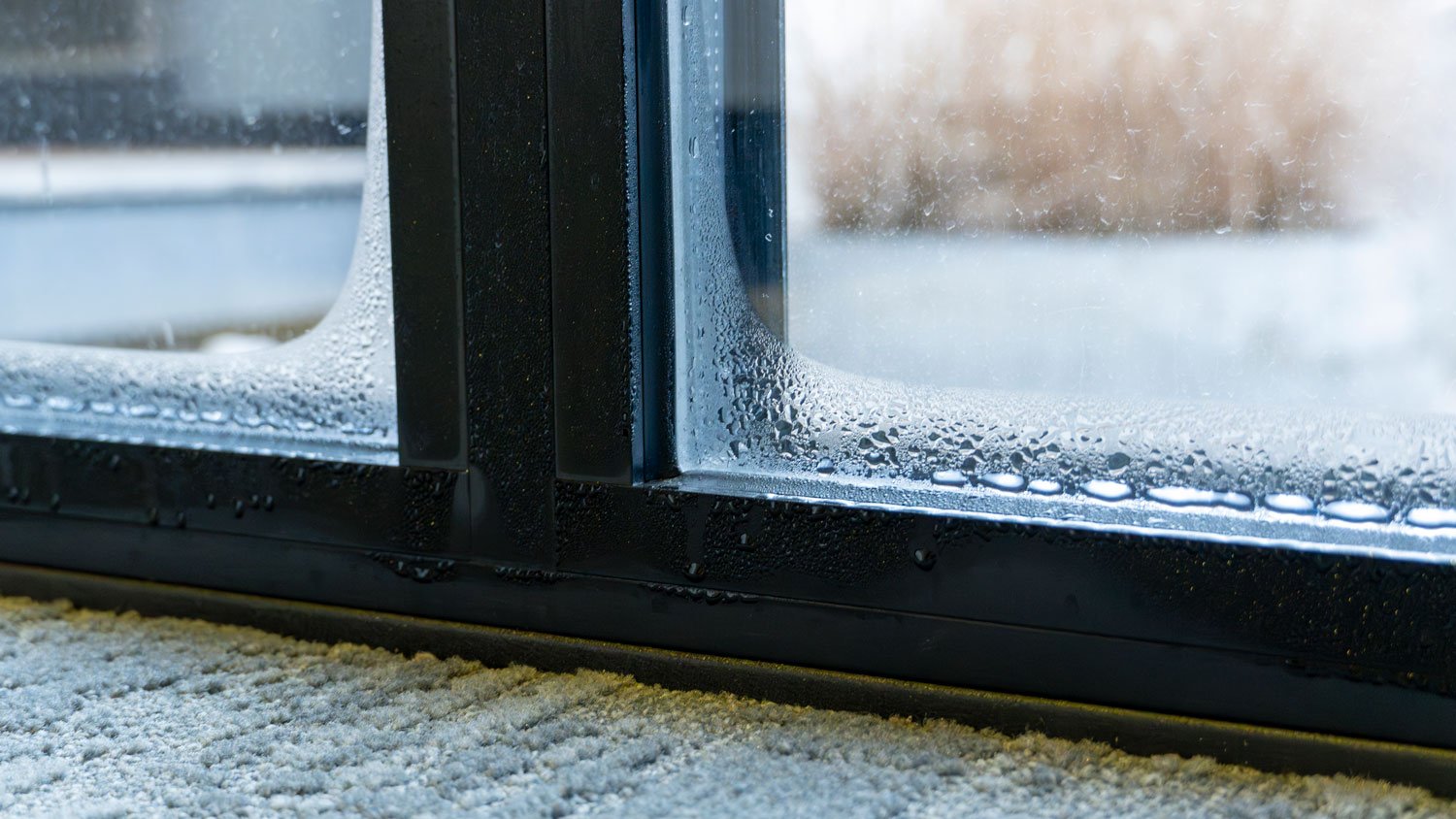Why Is My House Colder Than Outside? 5 Reasons Why
Stay frosty—check out these common issues and their fixes


Heat transfers through walls, causing the house to lose warmth.
Airflow and humidity can both contribute to this issue.
Make sure your house is fully sealed and your thermostat works as intended.
Ever wear layers to ward off the chill in your house only to find out that the weather outside is actually warmer than you thought? After all, the inside of a home is supposed to feel warmer than the outside. What gives? The problem is likely caused by poor insulation or drafts.
Read on and learn about all the different causes responsible for a cold interior, and how to fix it without increasing your heating bill.
1. Heat Transfer Through the Walls
This is a common problem that is more likely in older houses. In the summer, heat transfers from the outside in, which is why your walls may feel warm during those months. In the winter the opposite happens which results in a chilly home. This effect becomes harder to prevent the larger the temperature difference becomes.
How to Fix It
You may need to add or upgrade your home’s insulation.
In truly frigid climates, consider upgrading your siding.
Thermal window treatments can help, but won’t solve the underlying issue.
2. Airflow and drafts
Airflow issues are caused by two things—malfunctioning air circulation systems like heating or purifiers, and cracks and gaps in the walls and doors. Cold air loves a vacuum, so if there is a small hole in one side of your home and a tiny crack on the other, cold air can cycle through your house while pushing warm air outside. Check your home for air leaks. The best way to do this is to have an airflow test done.
How to Fix It
Have a pro perform a blower test to check for air leaks.
An alternative is an infrared leak test.
A DIY way to check for drafts is to place a lit candle near the doors and windows to see if the flame flickers.
3. Humidity Issues

Excess humidity can cause a room to feel much colder, even if the temperature hasn’t changed. This can be caused by a number of reasons (inadequate ventilation is a common cause) but the first step is always the same: Measure humidity levels in your home.
How to Fix It
Install a hygrometer to keep an eye on your humidity levels. Smart devices usually have this feature.
Heaters can control humidity if they have an attached whole-house dehumidifier. Make sure that’s working correctly.
Have a pro make sure there’s no mold or condensation issues in your home.
Run a bathroom fan during showers and baths.
Consider a dehumidifier.
4. Ineffective or Not Enough Insulation
The insulation you need for your home depends on a number of factors but no matter what, you need to get comfortable with something called R-value. R-value, short for resistance value, is a measure of how resistant your insulation is to heat transfer. If you have insulation with too low an R-value for your home, it won’t be able to hold heat well. Insulation lasts a long time— at least 15 years—but not forever.
How to Fix It
Colder homes will need a higher R-value insulation.
R-value is hard to gauge this on your own—leave it to a pro.
Experts likely seal all gaps, wrap pipes, insulate attics and basements, or replace your existing insulation if degraded.
5. Thermostat Error
A broken thermostat can cause erratic heating, leading to the house feeling colder than it should and sometimes even colder than the outside temperature. No matter what type of thermostat you have, they all have points of failure. You can check your thermostat relatively easily, especially if it is digital. These handy units function similarly to a computer and they often have a backup device (your phone). You should get error messages if anything goes wrong. Older style, manual thermostats aren’t as easy to check, unfortunately.
How to Fix It
Do a cursory check of your thermostat.
Make sure the thermostat is on—this simple oversight is fairly common.
Talk to an HVAC repair pro near you to discuss fixes if a broken thermostat is affecting your heating system.
When to Call a Pro
A cold house may not seem like an urgent problem, but that does not mean you should continue living in an uncomfortable environment. Here are some reasons to enlist the help of a professional when your house is frigid:
To save on heating bills.
To make sure your house does not have fluctuating temperatures.
To increase the comfort of those living in the home.
Frequently Asked Questions
If your whole house is cold that’s one thing, but what if you only have a few rooms that are cold? First, you need to determine why this may be happening. A good place to start is to investigate the potential causes listed in this article—heat transfer, airflow, thermostat problems, humidity, and insulation. Once you’ve narrowed down the issue, you’d apply the same principles to the cold rooms as you would to the entire home.
Your house may be cold even if the heat is on because of bad insulation, gaps in doors, small holes pulling hot air from the home, or excess humidity. The heater itself might be malfunctioning. For this problem, you’d need to talk to an HVAC pro. If you have a gas heating system (most do) this should be considered an urgent job as natural gas could be leaking in your home.
The cost to permanently fix a drafty or cold house varies greatly. Let’s use the best and worst-case scenarios. Best case? You have a small draft and need to add some seals to a door frame, costing less than $20. Worst case? Your house needs to be fully insulated or you need an HVAC swap, which could end up costing $15,000 or more.





- Furnace Repair
- Air Conditioning Repair
- HVAC Repairs
- Furnace Installation
- Wood & Pellet Stove Repair
- Dehumidifier & Humidifier Repair
- Heat Pump Companies
- Swamp Cooler Repair
- Wood Stove Services
- HVAC Companies
- Commercial A/C Repair
- Geothermal Installation
- Air Conditioning Installation
- Boiler Repair
- 24 Hour Furnace Repair
- Geothermal Repair
- Heat Pump Repair
- Humidifier Installation
- Thermostat Repair
- Thermostat Installation
- Nest Installation
- Heating & Cooling
- Heating Repair
- Furnace Cleaning
- Furnace Tune-Up
- HVAC Technicians
- Subcontractors
- Furnace Maintenance
- Plumbing & Heating Companies
- Wood Stove Inspection
- Mini Split Installation
- Wall Heater Repair
- Duct Installers










